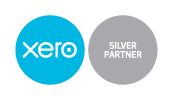This article examines key trends that characterise millennials’ consumption of alcohol, and looks at the repercussions for businesses in the industry. Lastly, the article suggests that managers in the alcoholic beverage industry download inventory software to track current trends in alcohol consumption to stay in tune with the millennial consumer base.
Millennials Love Variety
According to Ben Steinman, president of Beer Marketer’s Insights, “Famously, the millennials are fickle. They’re seeking variety, innovation and flavor.” While beer still holds its title as the reigning American alcoholic champion, wines and spirits are becoming increasingly popular among the millennial demographic.
Although the beer industry is worth a whopping $US37 billion, according to Bloomberg millennials prefer wines and spirits to the popular carbonated beverage. According to the data, beer consumption fell 1% from 2016 to 2017 in the U.S. market, while both wine and spirits remained unmoved.
Further, millennials are seeking out variety within wine beverages themselves. According to the Wine Market Council (WMC), millennial wine drinkers are seeking diversity in regions and styles more than ever.
The Millennial Demand for Quality
Another key trend that millennials are pushing is the demand for a higher standard of production in alcoholic beverages. The research from Bloomberg suggests that the younger generations are increasingly concerned with consuming “handcrafted,” “artisanal,” “microbrewery,” “small batch” “single barrel” and “single malt” alcohol products.
The latest data suggests that, while only 27 percent of baby boomers equate price with quality, over 40 percent of millennials do. This is particularly true when it comes to wine sales – according to the WMC’s research last year, 37 percent of high-frequency wine drinkers purchased at least one bottle of wine over $20 per week.
Millennials Drink Socially
For this younger generation, drinking alcohol is increasingly associated with social status and enjoyment. In our digital age, millennials lives are dominated by the use of social media like Facebook and Instagram. Millennials are increasingly using these forums to share their drinking habits with friends.
For those in the business of manufacturing or selling alcohol, this means that marketing strategies must now take advantage of millennials digital presence.
What Does This Mean for Retailers and Manufacturers?
For manufacturers and retailers in the alcoholic beverage industry, these trends can both help and hinder growth. Depending on how in tune managers are with current trends, the millennial influence on the industry can provide both opportunity for growth and the risk of stagnation.
Manufacturers and retailers should download inventory software to keep track of both fast and slow-moving products alike. When businesses download inventory software, managers can track sales trends and prepare stock and marketing strategies accordingly.

